SPEED, THE SMART WAY
On board Sanlorenzo’s new jet-powered SP110 sports yacht
One of the most-talked-about yachts of this winter has been the SP110, a performance cruiser with a whole new design philosophy. Risa Merl discovers the innovations fuelling the excitement
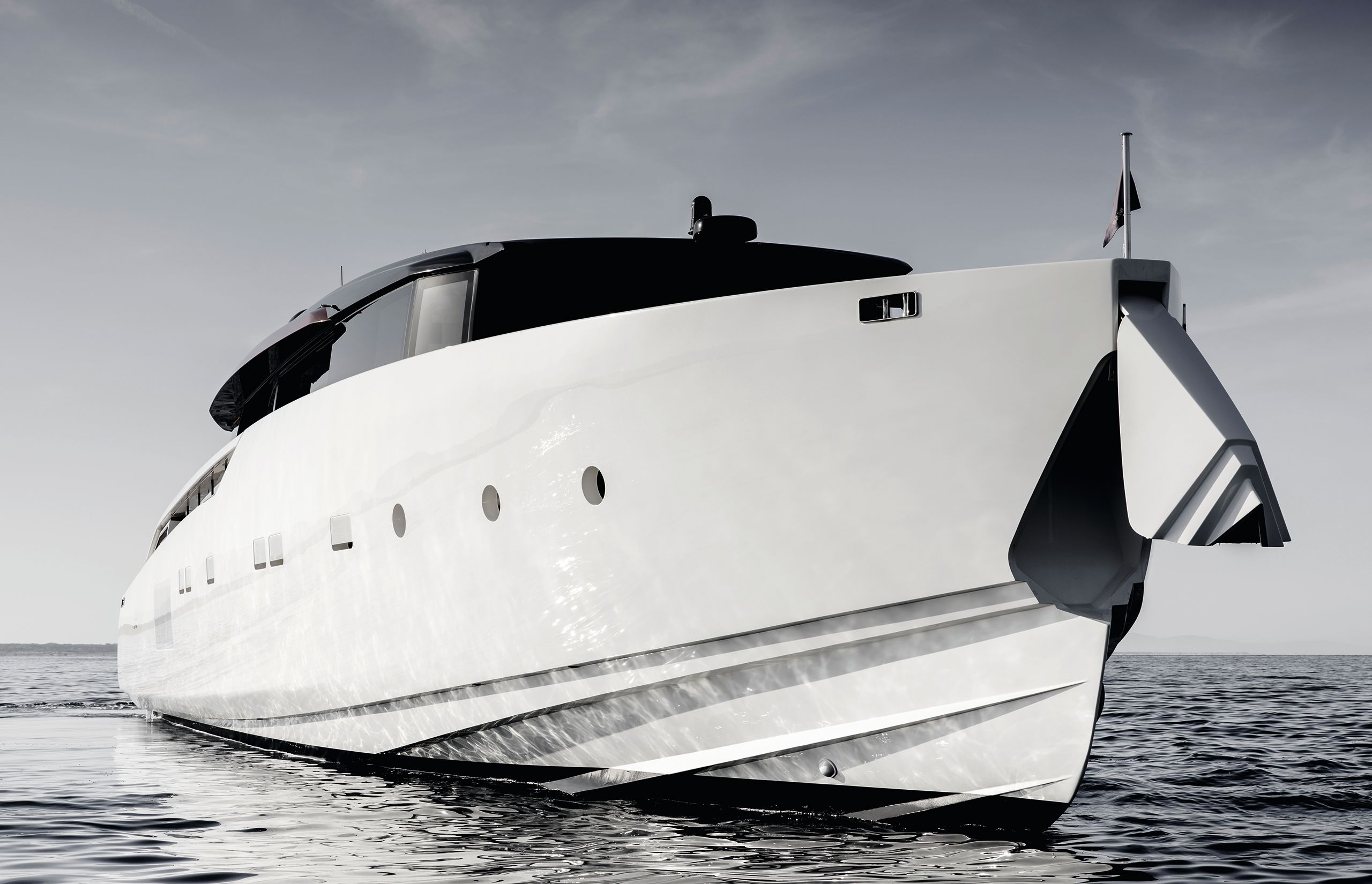
“It was a completely new project in every sense – for the yard, for yacht design and for the performance yacht market,” says Bernardo Zuccon, designer of the new 33-metre Sanlorenzo SP110. From the moment you step on board, you can tell the SP110 is not like other high-performance boats, and not like other Sanlorenzos, for that matter.
With the main saloon’s large glass door slid completely open, from the passerelle you get a straight view into the yacht’s cavernous interior and can marvel at a double-height loft configuration. This is where I find Zuccon. Leaning on a railing over the loft balcony, he stands on a level that is neither the main nor the upper deck. It takes the brain a moment to adjust and to let go of attempted comparisons to other yacht layouts. It would amount to the useless task of comparing apples and oranges.
With its new SP (Smart Performance) line, Sanlorenzo aims to reimagine the high-performance open yacht as we know it, and it’s not just about the boundary-pushing layout. The purposefully simple exterior lines, chic Lissoni & Partners interiors and eco-conscious power package make her a standout in the sports yacht market. She boasts waterjet propulsion, an SCR emissions control system and a roof full of solar panels to offset the power used by onboard appliances. Sanlorenzo makes no claims of this yacht being green but it attempts to balance the yacht’s high-speed soul with such eco-minded attributes.
“We wanted to do something we had never done before and catch the eye of a new clientele,” Massimo Perotti, Sanlorenzo chairman and CEO, says of the brand’s first coupé-style superyacht. “We’ve never designed an open boat like this – there were a couple of attempts in the past at much smaller versions, but building an open coupé superyacht [wasn’t part of] our heritage,” Perotti says.
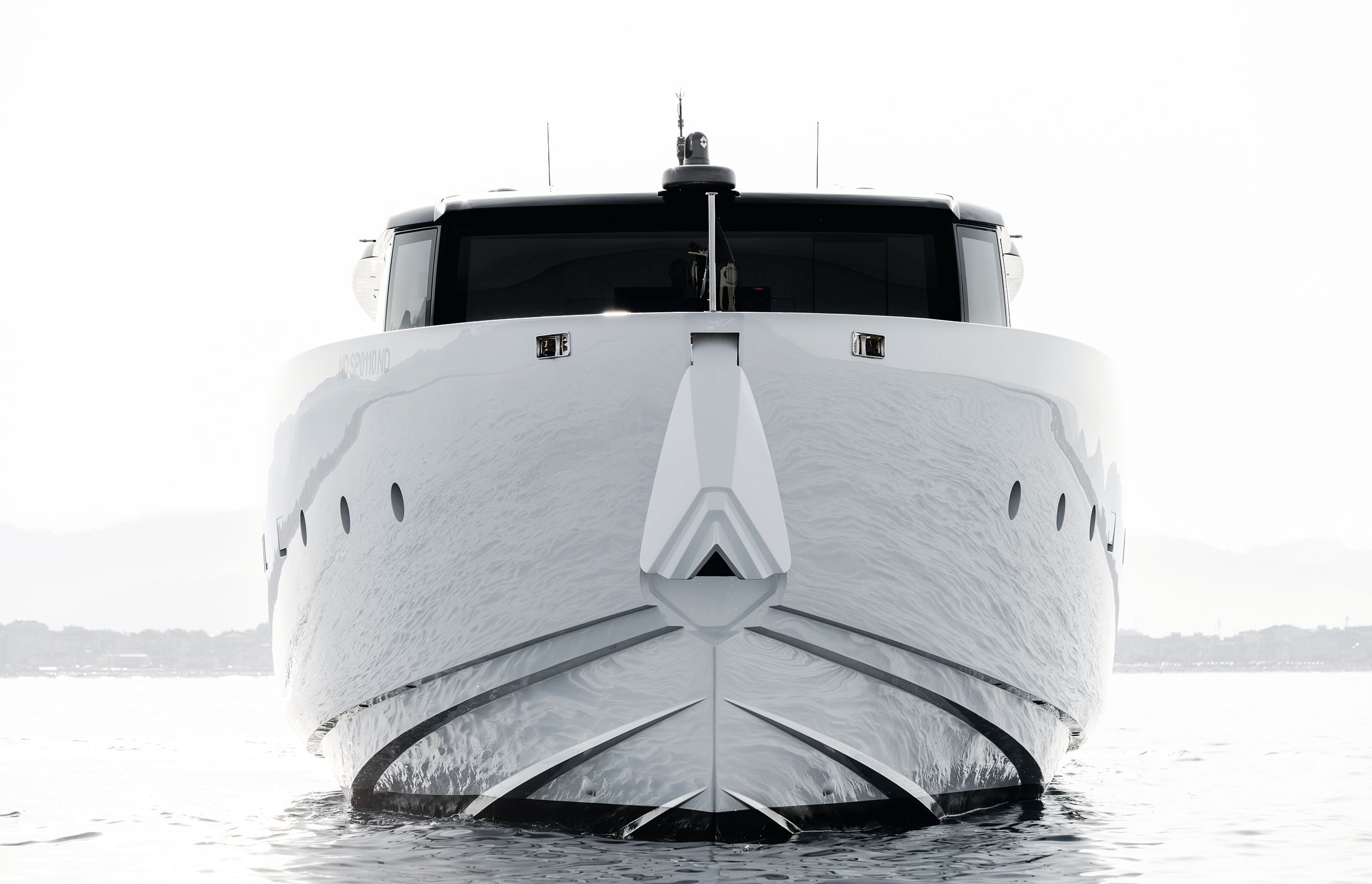
Deciding to break into this market was an interesting move for Sanlorenzo, as Perotti admits, not just because it was a new endeavour for the yard but also because this yachting segment has seen a downturn. “After 2008, the open boat market collapsed,” Perotti says. “Before 2008, the open boat market was around 20 per cent of all motor yachts. Now it’s down to five per cent, or even less… a lot of factors are working against it, from fuel consumption to carbon output.”
Even the most die-hard performance builders have added displacement yachts and explorer vessels to their lineups. Perotti and his team saw an opportunity to offer something different. “There was a real lack of new concepts in open boats,” he says. “We understood it was not a huge market, but we thought it could be an interesting niche because even though there’s an interest in SUV cars, people will still always want to drive Porsches and Ferraris.”
Perotti is also the new series’ first client. “I decided to buy the first one myself because I wanted the boat to be exactly like this, with the Lissoni interior,” he says.
The new line is off to a strong start, with four hulls already sold as of this writing. Some of this success could be attributed to Perotti’s decision to call on yachting industry icon Tilli Antonelli to help with the project. Antonelli’s name should be familiar to those well-versed in yachting – he founded the performance yacht builder Pershing in 1985 (now part of the Ferretti Group), which is known for its 50-knot-plus speedsters. After Pershing, he founded Wider Yachts in 2010, which broke new ground with innovative layouts and opening side hulls that seem to have become ubiquitous since then. At Sanlorenzo, he has served as supervisor of the SP line.
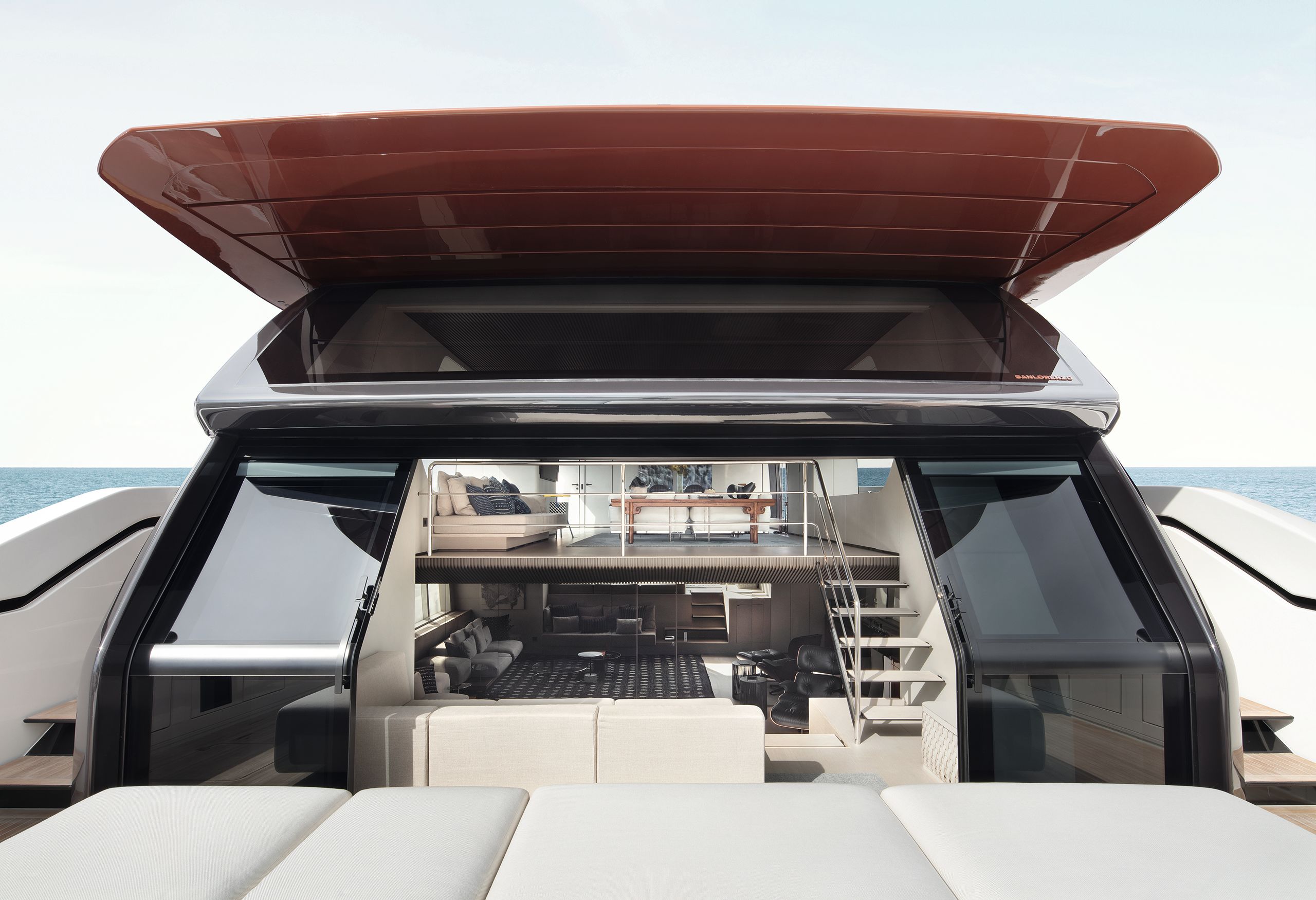
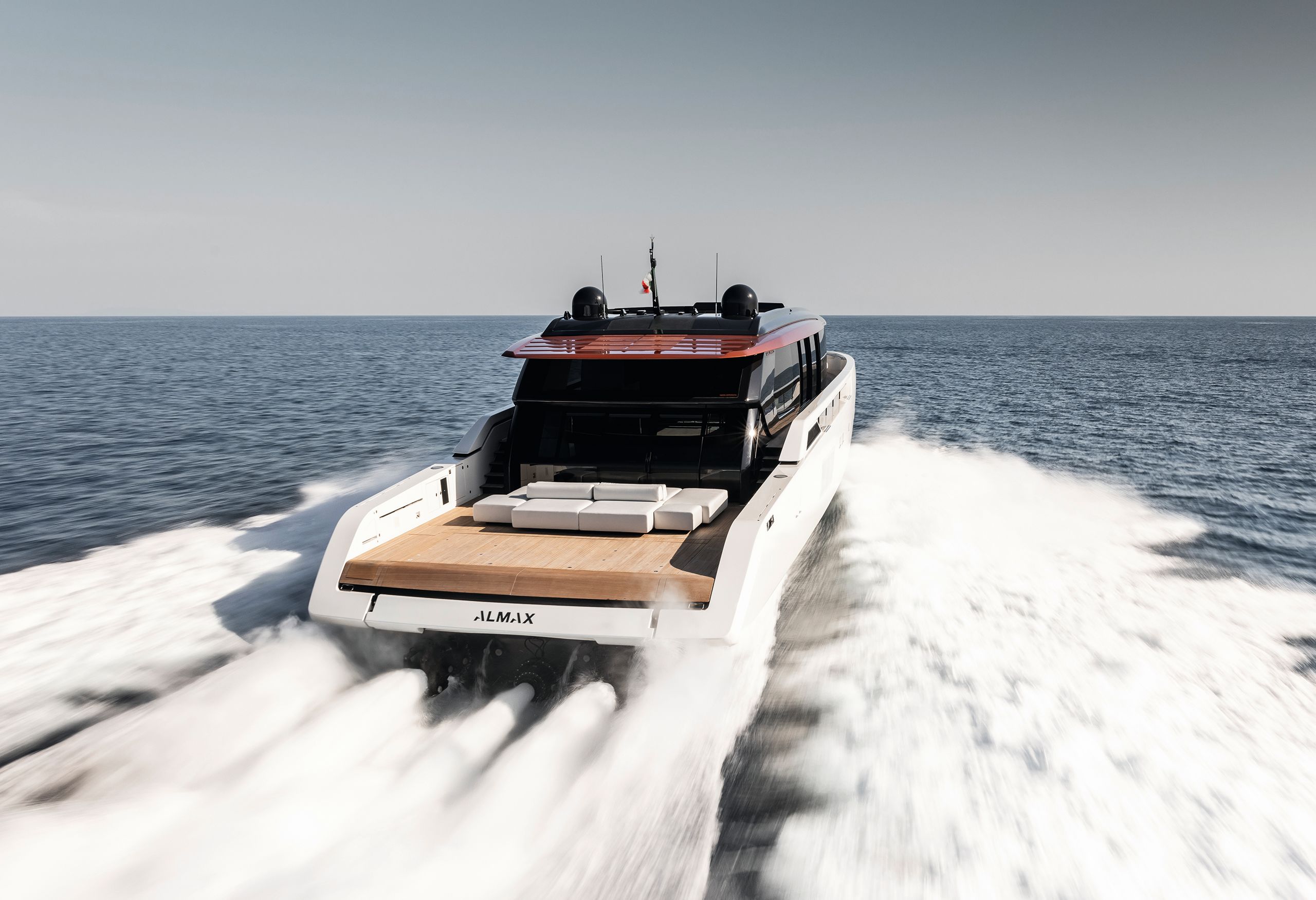
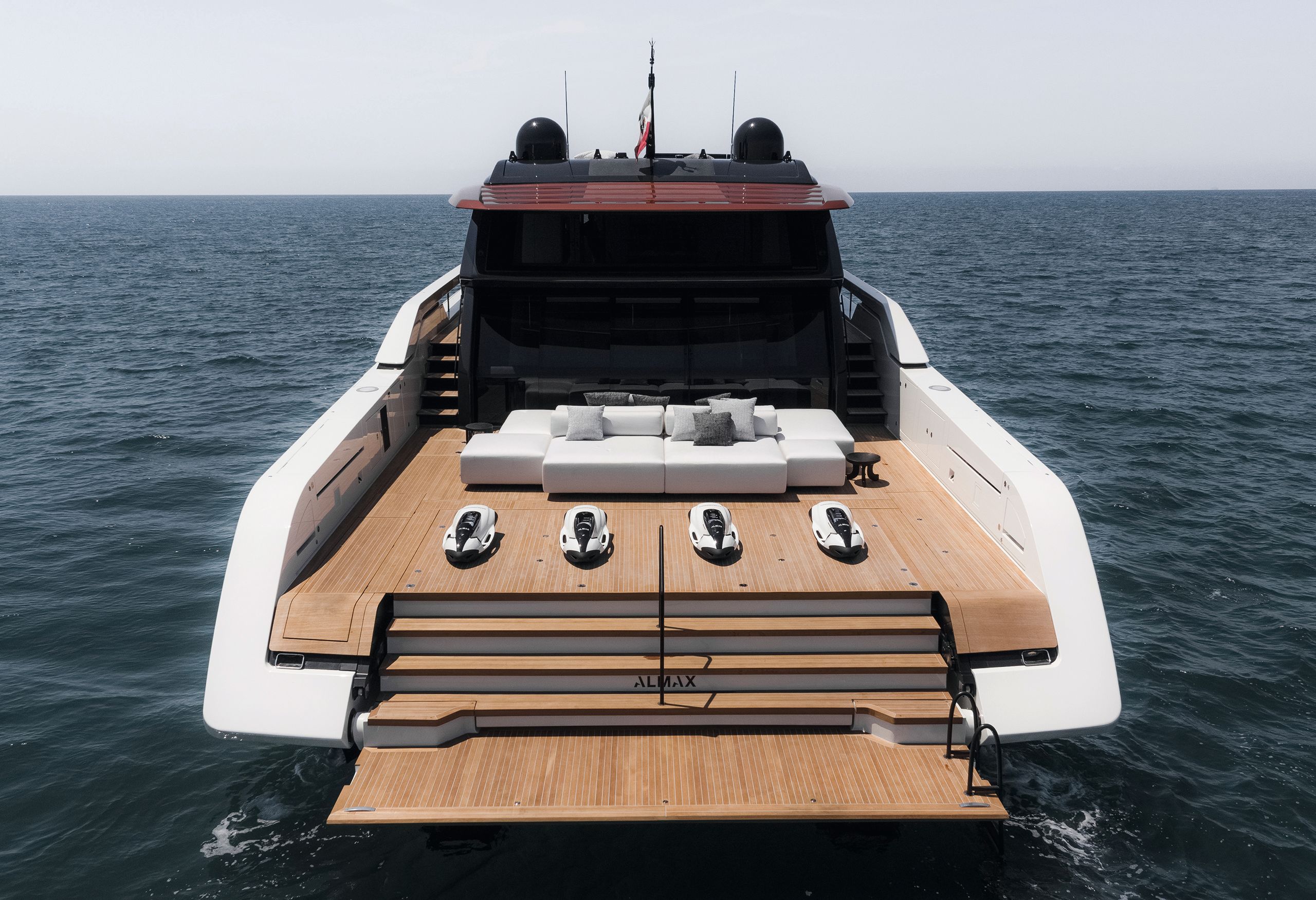
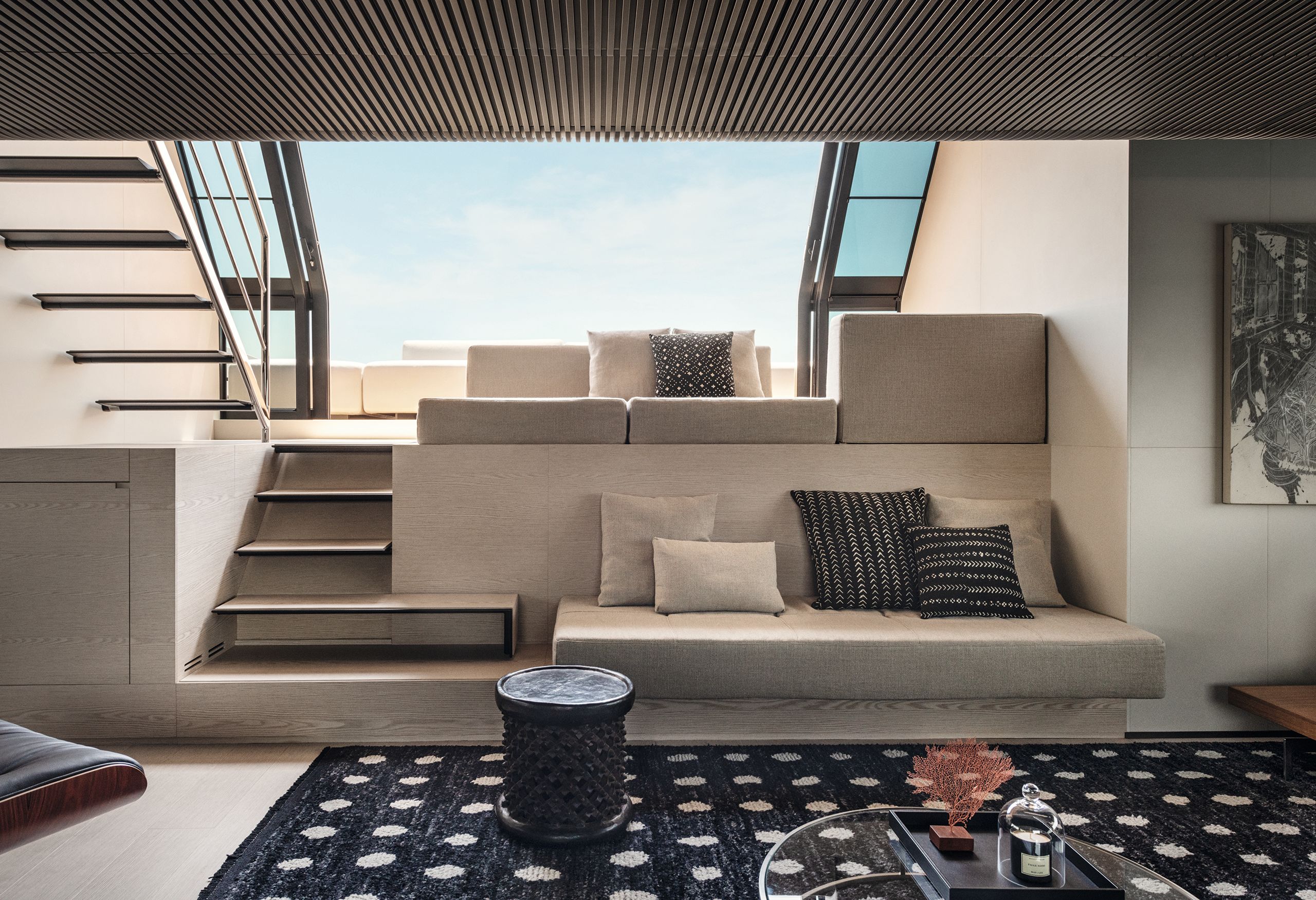

ERIK LEFVANDER
ERIK LEFVANDER

GUILLAUME PLISSON
GUILLAUME PLISSON

GUILLAUME PLISSON
GUILLAUME PLISSON

ERIK LEFVANDER
ERIK LEFVANDER
Standing on the aft deck, you can see into both the lower deck lounge (bottom right) and the main deck lounge. The stairs and the swim platform recede, leaving nothing but a flush, open space separated from the inside via a giant glass door. A vital part of the brief was maintaining good seakeeping in heavy seas, with a soft ride while achieving a cruising speed of more than 30 knots
The SP110 was a nominee for the World Superyacht Awards 2023

Antonelli was up for the challenge of bringing a new point of view to this type of yacht. “I don’t like to make copies,” he says. “Looking at the competition, open boats always have the same layout, the same shape. In my opinion, it represents a lack of fantasy.”
The aim was to transcend the stylistic features that are commonly seen on yachts of this category – think slim beam, curvaceous lines, cat’s-eye windows and a pared-back interior. Instead, the team behind the SP110 opted for a straight windshield, low-profile superstructure and floor-to-ceiling glass that slides open on both sides. Relatively small windows on the lower deck, which blend in with the paint, keep the hull profile clean. “There’s also a very different internal layout, and the open stern, which is a bit like a sailing yacht,” Antonelli adds.
Zuccon International Project, which penned the exterior and collaborated on the general arrangement, created the SP110 with a “less is more” approach. “The idea was to use just three lines,” says Zuccon, who used a copper-colour detail to help the yacht stand out. “The design is sleek and sporty, but at the same time is simple and refined, without losing the deep-rooted elegance that distinguishes the Sanlorenzo brand,” he says.
Imperative to the brief was combining high performance and sleek lines with an interior that feels as comfortable as a traditional motor yacht. On typical open yachts, the volume is limited. To get around this, the SP110 has a wide beam of eight metres. “She’s at least a metre wider than other boats in her size range,” Zuccon says. Internal spaces were reimagined with a double-height stern to provide multiple saloons. From the aft deck, one flight of stairs leads up to the main deck, which is a metre higher than other yachts, while another set of steps leads down to the lower deck lounge area.
“By going down one metre and up one metre, we managed to have different living areas inside, but from the outside still have the feeling of a coupé,” Perotti says. When the aft wall of the yacht slides open, both living areas are exposed to the exterior deck. Sightlines stretch from the main deck dining area out to the swim platform. “While using the boat, as I have this summer in the Med, [I noted that] people can be inside and outside in different areas but still see each other and feel connected,” Perotti says.
The raised main deck contains the open-plan saloon and dining area, dayhead, galley and bridge. Four doors slide open and the entire deck can be transformed into an open-air terrace on the sea.
The interiors come from longtime Sanlorenzo collaborator Lissoni & Partners. Piero Lissoni designed the yacht with his team of Stefano Castelli, Marco Gottardi, Patrizia Manconi and Gaia Guarino. “What I tried to bring to this boat, with its streamlined form, was open spaces, connection between the interior and the exterior and a great deal of technology,” Lissoni says. “The double-height entrance is an innovation with respect to the other Sanlorenzo models, but I also like the large openings on the sides that enable the interior to connect with the exterior.”

The lower deck lounge is a cosy space with a TV area. A companionway leads from this snug to four cabins. The overnight spaces are on the darker side, with smaller portholes setting the mood for relaxation. The owner’s suite notably is not full beam, yet it includes a good-sized en suite and a walk-in wardrobe. “We were focusing more on the daily use of the yacht,” Zuccon says. “Cabins are for sleeping – you don’t really need so much space.” A great benefit of the layout, as he points out, is that if owners and guests want to wake up and go for a swim, all they have to do is walk through the lower deck lounge straight onto the open aft deck and dive in.
The interior decor, blending teak, resin and lava stone, is simple and elegant. Details include metal, steel, mirrored surfaces and plenty of glass. Furnishings include contemporary pieces mixed with collectibles and custom-made items. “In the case of the SP110, maybe the most important interior constraint was the need for lightness, given that she is a very fast boat,” Lissoni says. “Everything revolves around this, and we chose materials that wouldn’t add too much weight. Resin for the walls as if in a house, wood parquet for the floors, and a slatted ceiling that also serves to conceal lights, speakers and air vents.”
Saving weight was also a priority for the naval architects. “Weight reduction is a must for this type of yacht; we reached it by working on several items,” Antonelli says.
Toward this goal, Sanlorenzo worked with a glass subcontractor to cut the weight of the glass used on board by five per cent compared to regular glass. Carbon fibre and epoxy resin give strength to the superstructure while reducing weight. The builder also used a special sound-insulation material that is lighter and thinner than average but remains a very efficient sound barrier. “It’s more expensive in terms of time and money, but we were very happy with the end result,” Antonelli says.
“We were focusing more on the daily use of the yacht,” says Bernardo Zuccon of the modestly sized owner’s suite. “Cabins are for sleeping – you don’t really need so much space”
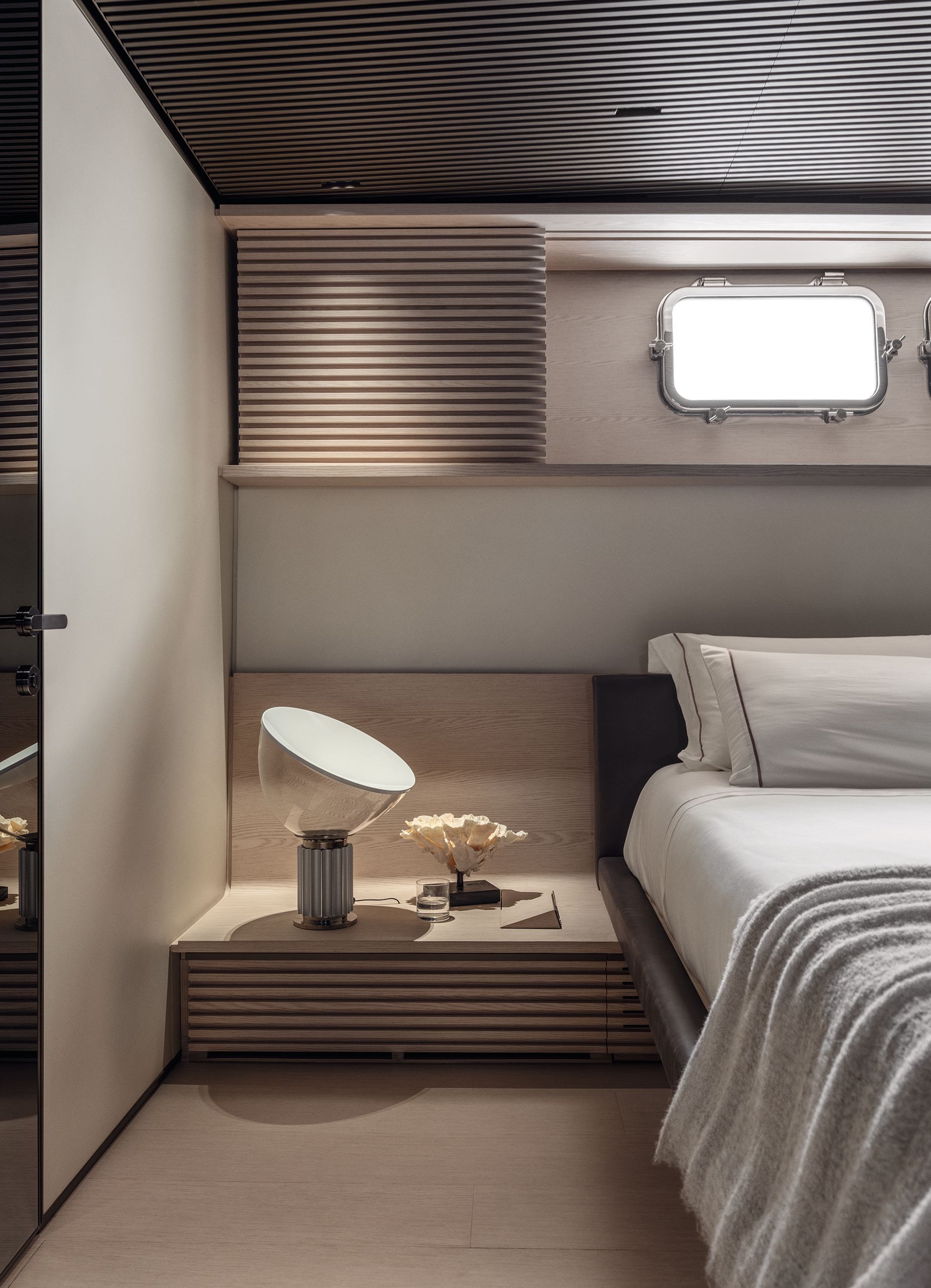
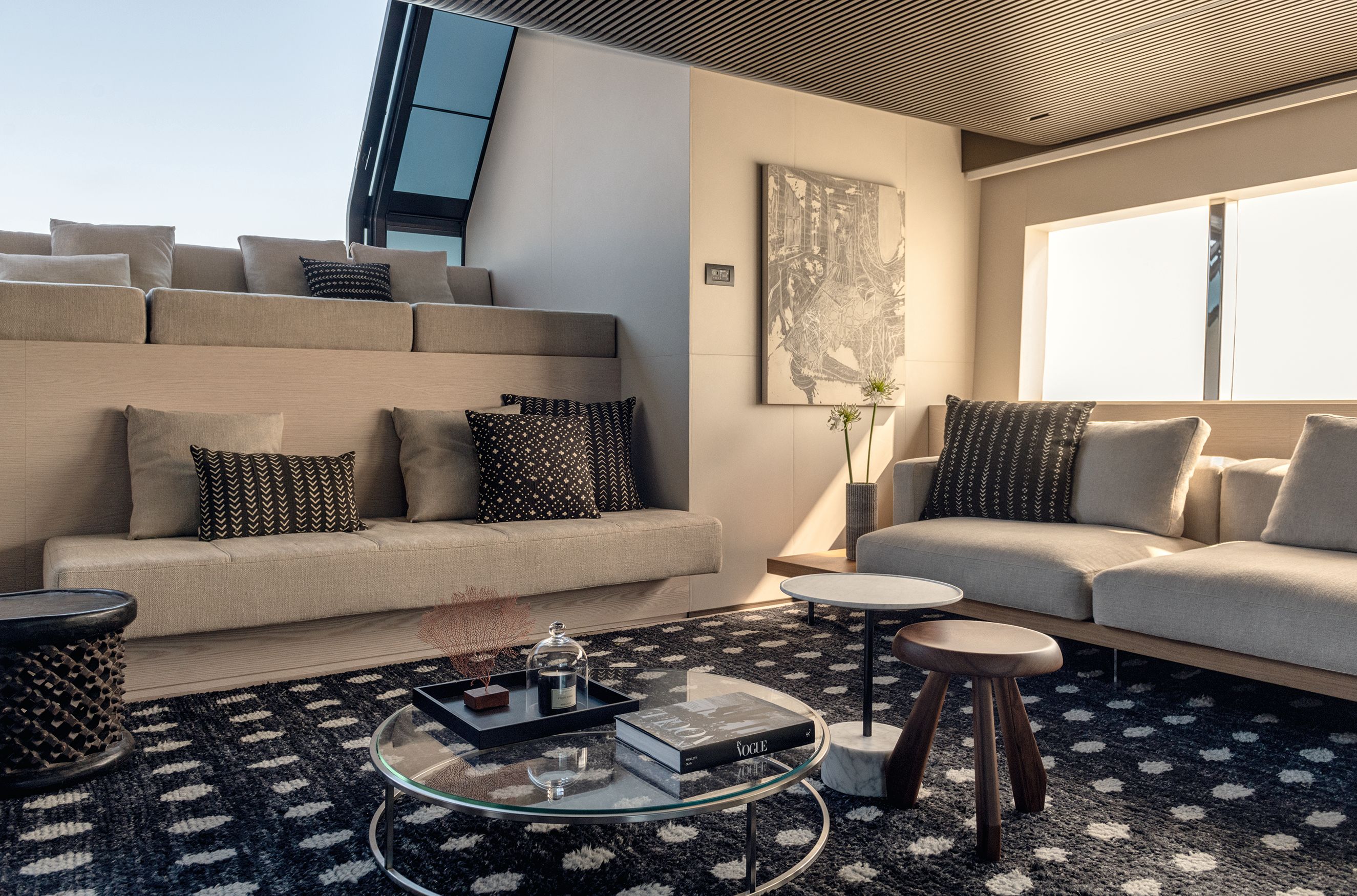
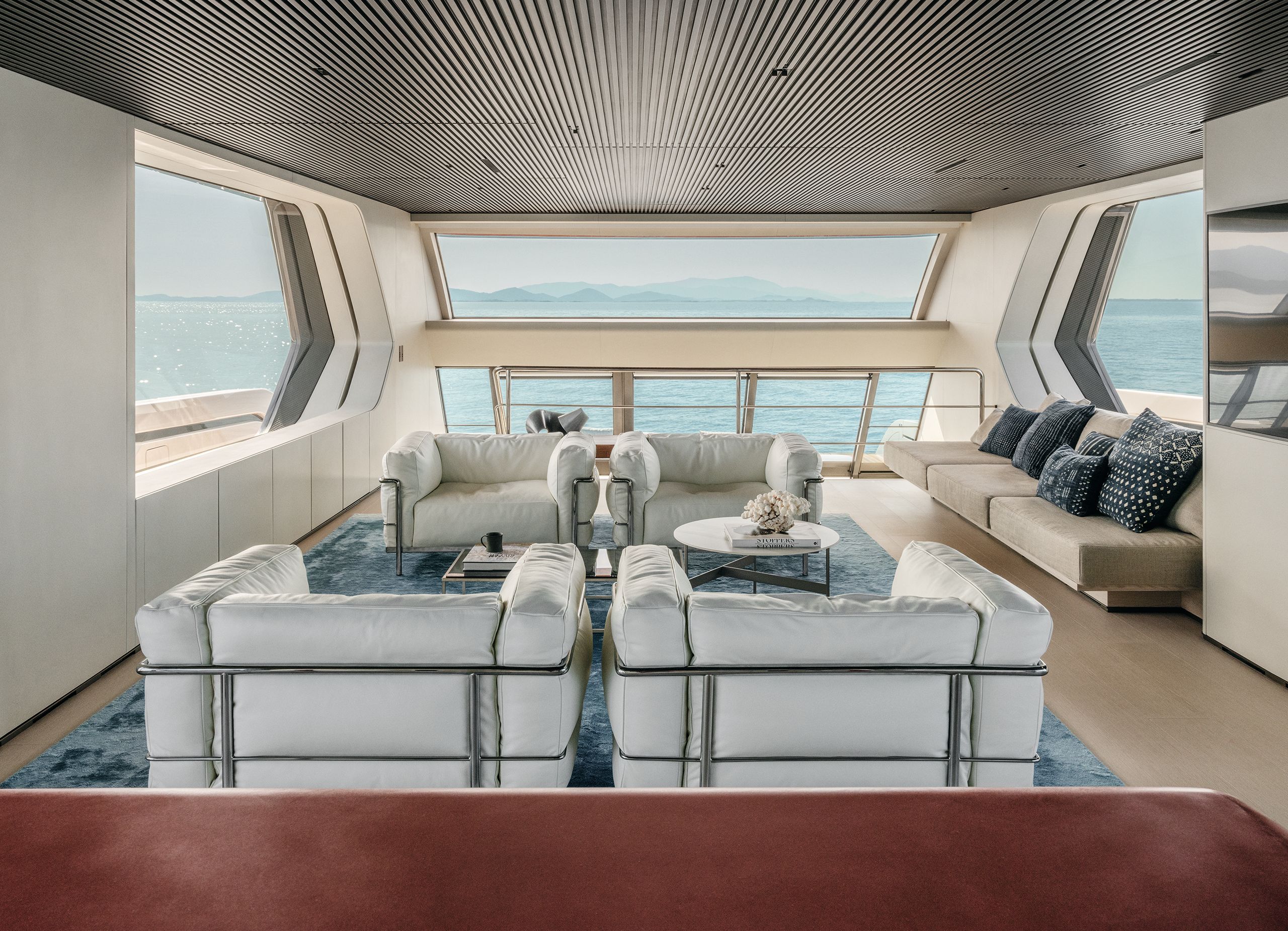
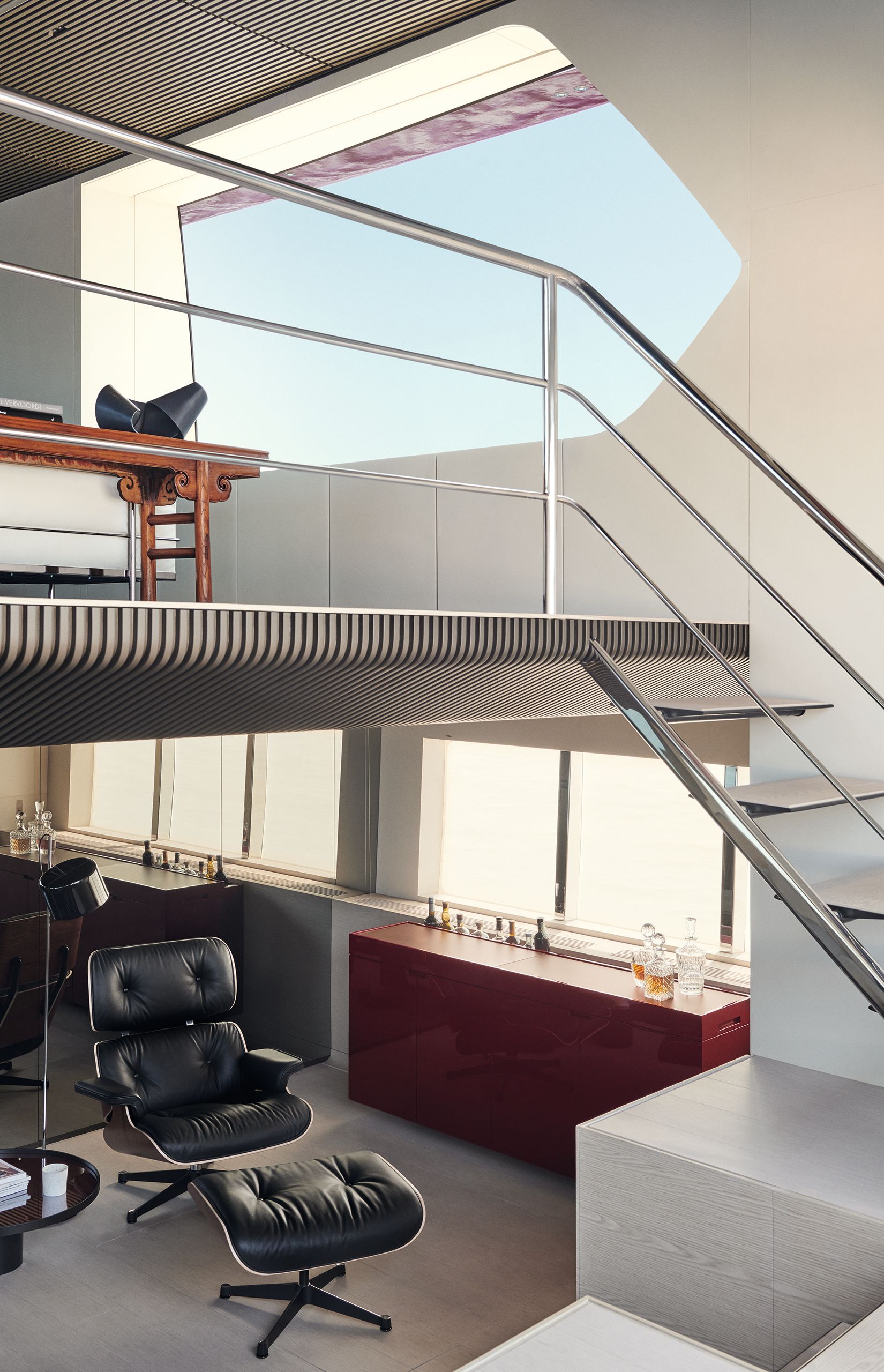
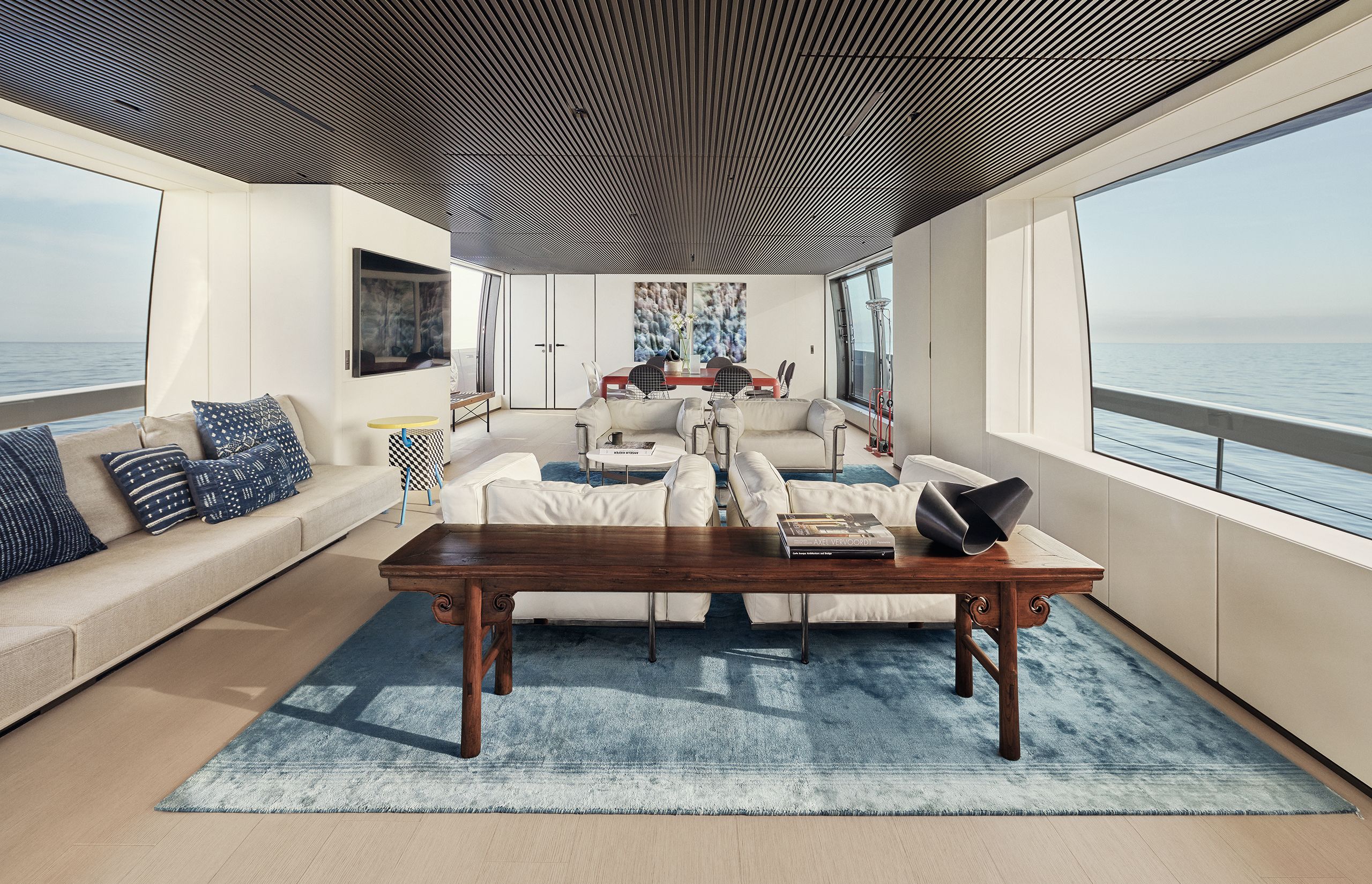

ERIK LEFVANDER
ERIK LEFVANDER

ERIK LEFVANDER
ERIK LEFVANDER

ERIK LEFVANDER
ERIK LEFVANDER

ERIK LEFVANDER
ERIK LEFVANDER
Down a flight of stairs from the aft deck, the cosy and casual lower deck lounge includes a bar and can also be set up as a home cinema. Floor-to-ceiling windows in the dining area and in the main saloon plus a wall of windows aft combine to flood the main saloon with natural light
The solar cells on the roof cover about 35 square metres. On a bright summer’s day they can generate up to 60kW of power

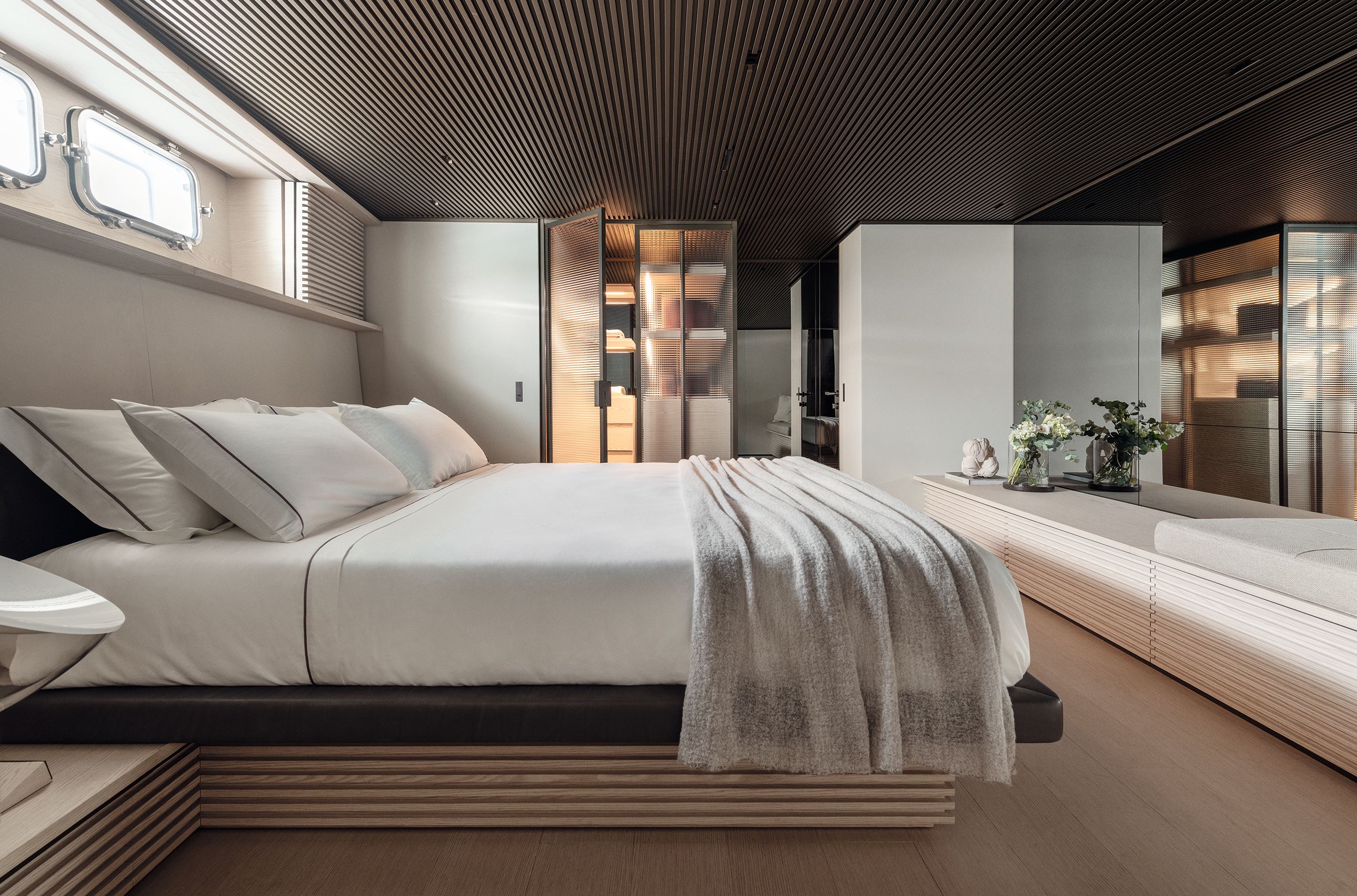
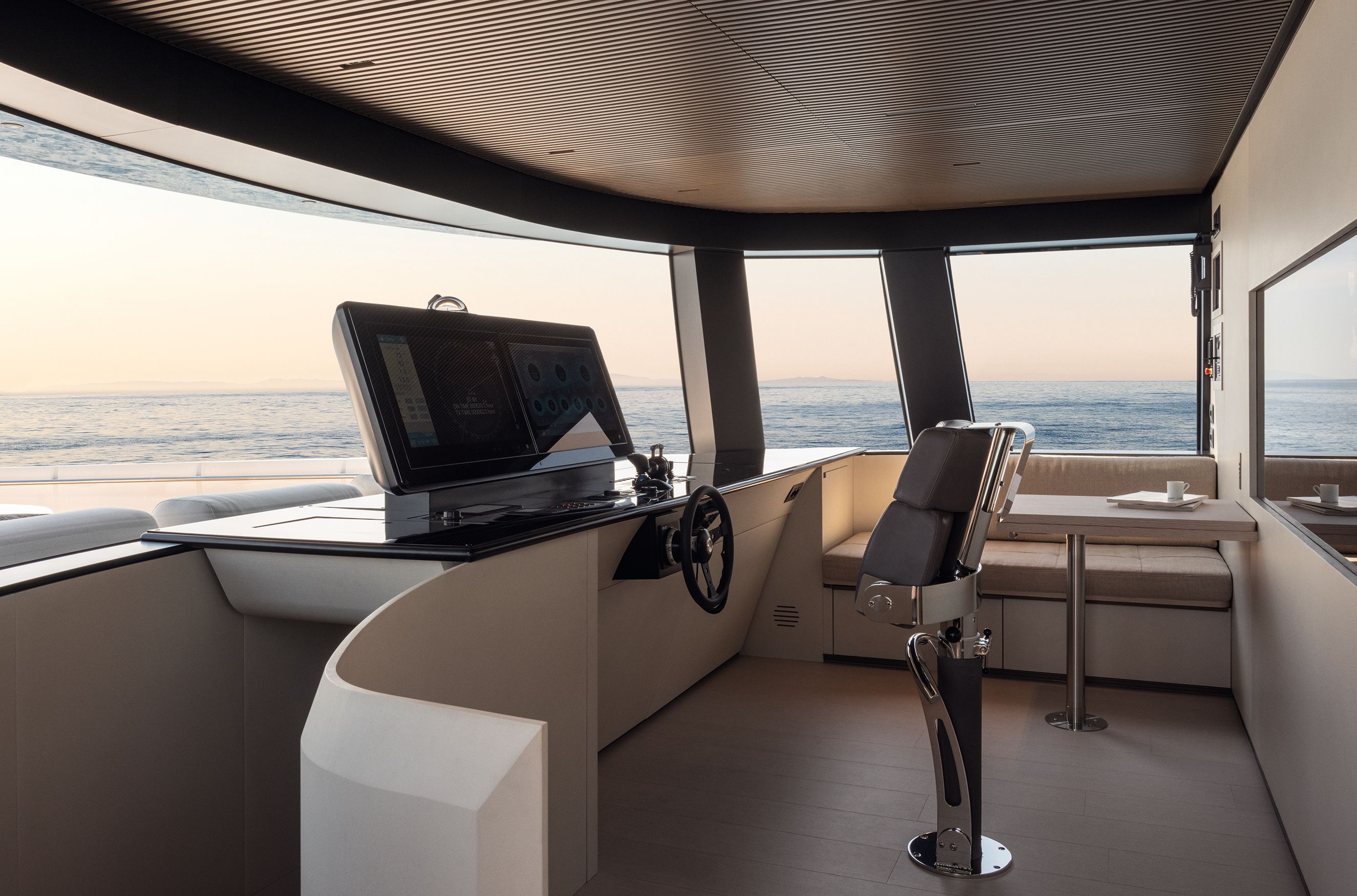
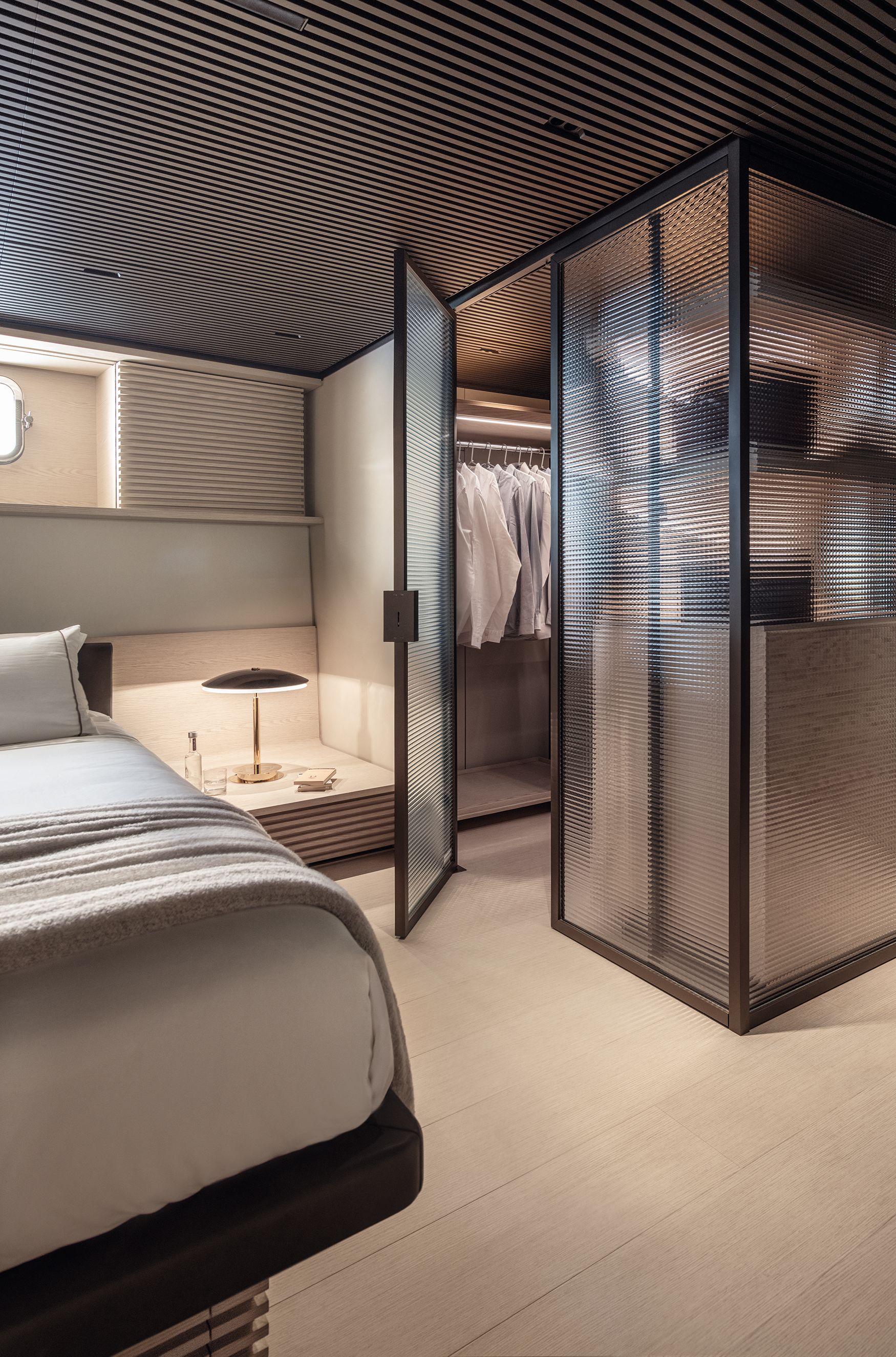

ERIK LEFVANDER
ERIK LEFVANDER

ERIK LEFVANDER
ERIK LEFVANDER

ERIK LEFVANDER
ERIK LEFVANDER
Glass-enclosed wardrobes, mirrors and reflective materials make the cabins seem larger and brighter. The first SP110 has a Lissoni interior, which is simple and elegant and uses teak, resin and lava stone, with a focus on weight saving and providing a serene experience. Bottom left: a vertical windshield is a departure for a fast yacht. The SP110, which has already been described as a giant dayboat, looks more like a sleek raised pilothouse than a performance cruiser, but her speed and manoeuvrability put her squarely in that category
The SP110’s exterior belies her performance capabilities. You might never guess she tops out at 40 knots. But as Antonelli says, “smart performance” is not just about speed. “The idea was for it to be fast, but also comfortable and safe,” he says. “It’s not a 60-knot boat, which is extreme. We are talking about a top speed of 40 knots and cruising at 33 knots.” The biggest hurdle, Antonelli says, was to get a speedy yet smooth performance out of this relatively beamy boat.
“The challenge was to get a pretty wide body on the deck [eight metres] and a ‘slick’ beam on the floating line [6.5 metres], so with a double-stepped hull we have achieved this,” he says. The deep-V hull has two spray rails in front and a wide step at the chine. Great attention has been given to the spray rail positioning to prevent air bubbles from tracking into the waterjet intake. A nearly 17-degree deadrise gives a comfortable ride, while a draught of only 1.3 metres means she can easily navigate the shallow waters of the Bahamas.
This is handy as the Florida owner of hull No 3, launching in June 2023, could make the run to the Bahamas in no time at all. Hull No 2 launches in February for a Mexican owner.
The feedback from Sanlorenzo owners has been positive, says Perotti. “We thought this was a niche market and would only need to build five to six per year, but now after seeing the response, we are going to increase production to 10 to 12 per year by 2024,” he says, speaking of the entire SP line, which will soon also include the SP90 and the SP130.
Sanlorenzo’s Smart Performance line might be an unorthodox offering in an already niche market, but the SP110 is turning heads. Say what you want about the yacht’s unusual design, but you certainly can’t call her boring.
WHAT SMART MEANS
A wealth of eco-conscious attributes gives meaning to the “smart” in Smart Performance. The SP110 is powered by three engines with waterjet propulsion. “The total weight is less than the same power pack with two engines,” says Tilli Antonelli, SP line supervisor.
“The flexibility of the speed range compared to consumption is way better with this configuration.” As an added benefit, waterjet propulsion has a very quiet operational mode with the absence of vibration. You can be in the cockpit while underway and you don’t have to scream over the noise of the engine.
This power package is coupled with a Selective Catalytic Reduction (SCR) system, which reduces NOx emissions by up to 90 per cent. Beyond this, the SP110 utilises solar panels to offset the hotel load and negate the need to run generators when at anchor; the batteries can handle the load for up to six hours during the day and 10 hours at night.
Additionally, the type of sandwich glass used on board helps reduce UV heat, so the air conditioning doesn’t have to work as hard. And Sanlorenzo was careful in choosing galley appliances, opting for lower power consumption ones. All of this doesn’t make the SP110 truly green, but it certainly goes a long way. “It’s a way of using a sporty boat in a smart way,” Antonelli says.
The deckhouse is designed to host solar panels but not distract from the sleek lines
The small flybridge is indiscernible in the profile
An efficient true galley holds a large refrigerator and low-energy appliances
With about 60.4 square metres, this area is the focal point for entertainment
The owner’s cabin has a generous en suite and wardrobe
The full beam hosts twin VIP cabins
The lower deck lounge easily connects guests to the aft deck

